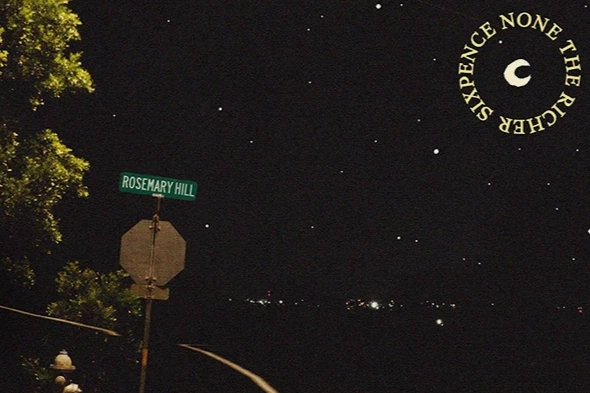Disclaimer: What follows are specific plot details and spoilers of “Gravity.” ┬ĀThe review contains spoilers regarding the movie. ┬ĀDo not read this review if you have not watched the movie yet, and you wish to in the future.┬Ā
The most remarkable thing about ŌĆ£Gravity,ŌĆØ the new film from director Alfonso┬ĀCuar├│n, is how quiet it is for long stretches of its running time.┬Ā Minutes go by where the only sounds you hear are radio chatter between its stranded astronauts and Houston and perhaps a few ominous notes of the taut score by Steven Price.
In a moviemaking industry that has spent the past decade cranking up volume and amplifying the bombast, this is a blockbuster that is not afraid to let silence speak for itself.┬Ā Perhaps ŌĆ£GravityŌĆØ is a film of sensations rather than a dream house of ideas, but it is one that is so finely tuned that it is hard to forget.
ŌĆ£GravityŌĆØ is a simple tale made extraordinary by Cuar├│nŌĆÖs skill as a filmmaker as well as a performance from Sandra Bullock, which may be the best she has turned out in her career.┬Ā It is a film about a fight for survival far, far from civilization in an air crash or shipwreck in the void of space.┬Ā ŌĆ£GravityŌĆØ is a film that speaks to the most primal emotions: grief, the will to survive, and the fear, loneliness and wonder of life.
Veteran astronaut Matt Kowalski (George Clooney) and rookie Ryan Stone (Bullock) are stranded in space when their shuttle is destroyed and crew are killed by a swirl of floating debris.┬Ā They conceive a desperate plan to reach the International Space Station again before the field of debris comes into their orbit or they run out of oxygen.
Cuar├│nŌĆÖs approach to this tale is barebones to the point of minimalism, making for a simplistic 90 minutes of film time.┬Ā ThereŌĆÖs no footage of fretting family members or of a bold rescue plan coming together on earth.┬Ā We spend the film entirely in the company of the two astronauts, the vast desolation of space, and until communications are cut off, Ed HarrisŌĆÖ voice as the ground controller.
There is no single precipice in the film: the scenes combine the highest and lowest point of the charactersŌĆÖ spatial posturing.┬Ā They are constantly falling or climbing, climbing and falling.┬Ā It is difficult to breathe while watching the movie, and almost impossible to not experience oneŌĆÖs own body as if it is stranded in outer space, without anything to hold onto, to root one to any solid earth.
Cuar├│n has not made a feature since his 2007 science-fiction cult-classic ŌĆ£Children of Men,ŌĆØ but ŌĆ£GravityŌĆØ is likely to be more influential than that film.┬Ā Even with such visual marvels as ŌĆ£Pacific Rim,ŌĆØ you will not see a better-looking big budget film this year.┬Ā ItŌĆÖs that rare film that is enriched by the subtle deepening of every frame with 3D.
ŌĆ£GravityŌĆØ is full of long takes as impressive as the ones in ŌĆ£Children of Men.ŌĆØ┬Ā This is a film that slowly draws every breath out of your body with its sustained tension.┬Ā The special effects, especially those used to bring long takes in zero gravity to life, are cutting edge and place you at the edge of space, impenetrable blackness one direction and the warm, inviting embrace of the Earth in the other.
Clooney turns in a characteristic performance as the competent Kowalski, a laidback professional who spins homely yarns in a warm drawl as he faces the blackness of space and inevitable death.┬Ā ItŌĆÖs not a role that taxes him; itŌĆÖs simply one that asks him to do what he does best.┬Ā ŌĆ£GravityŌĆØ really belongs to Bullock, however, giving her one of the best female lead roles of the year.
Angelina Jolie and Natalie Portman, who both rejected the part, must be kicking themselves.┬Ā But itŌĆÖs hard to imagine anyone other than Bullock bringing the same mixture of warmth and grit to the part.┬Ā In long stretches of the film, she has no one to play off beside herself.┬Ā Often, sheŌĆÖs working against corny dialogue.┬Ā It is thanks to Bullock that StoneŌĆÖs journey from depression to determination is as compelling as the effects are marvelous.
Many contemporary blockbuster films function simply to activate the sensesŌĆöto enact and embody the ŌĆ£thrill aestheticŌĆØ through its lavish special effects and immersive 3D technology.
There is much criticism of this as a cinematic form.┬Ā Some argue that complex characterization and serious storytelling are marginalized favor of the kinetic ride.┬Ā┬ĀThrill, however, is an expansive concept, and the senses are not necessarily crude or divisible in the way.┬Ā Spectacle can create the conditions for profound elation, as ŌĆ£GravityŌĆØ clearly does.
Gravity releases the viewer into an unknown or unknowable void and in so doing asks (or rather compels) them to consider what it is that makes one human, social, and connected.┬Ā It makes us realize something about ourselves.┬Ā That we are all simply drifting throughout life, attempting to grab hold onto something tangible, just like Stone is drifting throughout space.
Lost in space, caught floating and fleeing in the pure realm of the senses, we find out who we truly are and can be.



![There are more than 20 open cardio machines at Crunch Fitness. I enjoyed the spacious environment at Crunch, a sentiment that was shared by sophomore Sanjana Daggubati. ŌĆ£[Going to] Crunch Fitness was the right decision because [it] feels more professional. CrunchŌĆÖs workers are laid back, but not to the point where they don't care,ŌĆØ Daggubati said.](https://pwestpathfinder.com/wp-content/uploads/2025/09/IMG_5242-1-1200x900.jpg)

![Various empty Kit Kat wrappers crowd the desk, surrounded by scoring sheets. While production of Kit Kat flavors in the U.S. is limited, Nestl├®, the owner of Kit Kat, manufactures hundreds of unique flavors in Japan, including the flavors ocean salt and passion fruit. ŌĆ£I thought there [were] some interesting flavors, and a lot of them were really unexpected,ŌĆØ senior Elle Levesque said.](https://pwestpathfinder.com/wp-content/uploads/2025/09/image-2.png)


![PantoneŌĆÖs selection of the 2025 Color of the Year is revealed: Mocha Mousse. Ceramics teacher Ashley Drissell enjoys this yearŌĆÖs selection. ŌĆ£Maybe itŌĆÖs the name but [Mocha Mousse] reminds me of chocolate and coffee. It makes me hungry. ItŌĆÖs very rich and decadent,ŌĆØ Drissell said.](https://pwestpathfinder.com/wp-content/uploads/2025/02/DSC_0015-1200x800.jpg)



![Sophomore Shree Sikkal Kumar serves the ball across the court in a match against Lindbergh. Sikkal Kumar has been a varsity member of the varsity girlsŌĆÖ tennis team for two years, helping her earn the number two rank in Class 2 District 2.ŌĆ£When matches are close, itŌĆÖs easy to get nervous, but I [ground] myself by[staying] confident and ready to play,ŌĆØ Sikkal Kumar said.](https://pwestpathfinder.com/wp-content/uploads/2025/11/DSC2801-1200x798.jpg)
![Dressed up as the varsity girlsŌĆÖ tennis coach Katelyn Arenos, senior Kate Johnson and junior Mireya David hand out candy at West HighŌĆÖs annual trunk or treat event. This year, the trunk or treat was moved inside as a result of adverse weather. ŌĆ£As a senior, I care less about Halloween now. Teachers will bring their kids and families [to WestŌĆÖs Trunk or Treat], but there were fewer [this year] because they just thought it was canceled [due to the] rain. [With] Halloween, I think you care less the older you get,ŌĆØ Johnson said.](https://pwestpathfinder.com/wp-content/uploads/2025/10/DSC00892-1-1200x800.jpg)
![Focused on providing exceptional service, sophomore Darsh Mahapatra carefully cleans the door of a customerŌĆÖs car. Mahapatra has always believed his customers deserve nothing less than the best. ŌĆ£[If] theyŌĆÖre trusting us with their car and our service, then I am convinced that they deserve our 100 percent effort and beyond,ŌĆØ Mahapatra said.](https://pwestpathfinder.com/wp-content/uploads/2025/10/DSC_0018-1200x800.jpg)
![Sophomore Aleix Pi de Cabanyes Navarro (left) finishes up a soccer game while junior Ava Muench (right) warms up for cross country practice. The two came to Parkway West High School as exchange students for the 2025-2026 school year. ŌĆ£The goal for the [exchange] program is to provide opportunities for both Parkway students and our international exchange students to learn about other cultures, build connections and become confident, capable, curious and caring ŌĆö ParkwayŌĆÖs Four CŌĆÖs ŌĆö in the process,ŌĆØ Exchange Program Lead Lauren Farrelly said.](https://pwestpathfinder.com/wp-content/uploads/2025/10/Feature-Photo-1200x800.png)
![Leaning on the podium, superintendent Melissa Schneider speaks to Parkway journalism students during a press conference. Schneider joined Parkway in July after working in the Thompson School District in Colorado. ŌĆ£My plan [to bond with students] is to get things on my calendar as much as possible. For example, being in [classes] is very special to me. I am trying to be opportunistic [meeting] kids [and] being in [the school] buildings. I have all the sports schedules and the fine arts schedules on my calendar, so that when I'm available, I can get to them,ŌĆØ Schneider said.](https://pwestpathfinder.com/wp-content/uploads/2025/09/IMG_5425-1200x943.jpeg)
![Gazing across the stage, sophomore Alexis Monteleone performs in the school theater. The Monteleone familyŌĆÖs band ŌĆ£Monte and the MachineŌĆØ has been releasing music since 2012, but Alexis started her own solo career in 2024 with the release of her first single, Crying Skies. ŌĆ£My whole family is very musical, [and I especially] love writing [songs with them],ŌĆØ Monteleone said.](https://pwestpathfinder.com/wp-content/uploads/2025/09/DSC7463-1200x798.jpg)

![Leaping through the air, senior Tyler Watts celebrates his first goal of the season, which put the Longhorns up 1-0 against the Lafayette Lancers. Watts decided to play soccer for West for his last year of high school and secured a spot on the varsity roster. ŌĆ£[Playing soccer for West] is something I had always dreamed of, but hadnŌĆÖt really had a good opportunity to do until now. ItŌĆÖs [really] fun being out [on the field], and IŌĆÖm glad I decided to join the team. ItŌĆÖs just all about having fun with the boys and enjoying what time we have left together,ŌĆØ Watts said.](https://pwestpathfinder.com/wp-content/uploads/2025/09/DSC_1951-1200x855.jpg)
